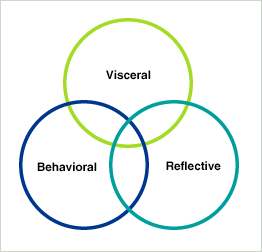From Paul White
It becomes more and more difficult for me to walk somewhere without seeing the ubiquitous white strings that ultimately accompany an iPod. I admit MP3 players have their usefulness – they make long rides more bearable, and can give you a few moments of alone time without disturbing others.
But here’s a word of advice to the iPod aficionados: Pull the plugs out and spare your eardrums for a few moments.
People are so in touch with their iPods that they are losing touch with the world around them. I’m not sure if it’s because they like to blink in step with Justin Timberlake, or if it’s simply because they like to tune out the real world.
Don’t get me wrong, I love music. After all, why would people do drugs if they didn’t want to listen to 311 or Frank Zappa? And I’m glad that the fad of the early 90s – the ever-present boom box – has gone the way of Kris Kross, because no one should be forced to your fickle music taste.
Some people look at Steve Jobs and call his company a genius for its world changing device. Not me. I see a man so intent on preserving the faded relic of Apple Computer that he is willing to destroy our social fabric in the process.
This may seem like overblown rhetoric, but let me explain. If people don’t talk to one another in voluntary, everyday situations, how will they react when they are forced to work together?
It may seem preposterous to believe that idle chitchat about the Lions, or discussing a current event can possibly be the hallmark of democracy. Surely people in non-democratic nations must coexist with one another as well?
I have seen on numerous occasions iPod-clad students shut the door in the face of other students behind them – not with any malicious intent, but simply because they were so lost in their own little worlds that they were oblivious to the people behind them. Is indifference any better than harmful intent? Not really, because both tend to have similar outcomes.
In Bowling Alone, Robert Putnam argues that civil society in the United States is on the decline; the pith of Putnam’s argument is based on the decline in the number of bowling leagues during the last decades of the 20th century, even though the number of bowlers significantly increased during this time.
The more relevant part of Bowling Alone distinguishes between two types of social capital vital to democracies: bonding capital occurs between groups of similar people, such as those who attend a Catholic church, and bridging capital occurs among diverse groups of people, precisely the types who came together to find common interest in bowling leagues.
This is precisely the point I am trying to address. By putting on an iPod, you are essentially isolating yourself from interaction with strangers, people you may have little to no common interests with. iPods make human interaction an afterthought, cast aside in pursuit of one’s own selfish desire to get away from the ruckus of society.
You don’t even have to actually participate in these random conversations to actually be a part of some sense of community belonging. Overhearing bits and pieces of random conversations is the best way to actually get a sense of what exactly goes through students’ heads on a day to day basis.
If the so-called student leaders on this campus want to help foster a sense of an SVSU community, they should start by encouraging students to unplug their iPods once in a while and actually talk to one another. If students find out they can actually talk to one another on campus, maybe students wouldn’t have as many reasons to leave as soon as their classes end. You can’t build a community spirit if no one talks to one another.
Filed under: Uncategorized



